This week, we revisit the Snow Monkeys & Hokkaido on my third and final Japan Winter Wildlife Tour for 2020. This is always an incredibly busy time for me, with three tours back to back, but it’s also a highlight of my year, as I meet all of the wonderfully talented and interesting guests that kindly participate in my tours, and this year was no exception. Our patience wasn’t tried by flight delays, and although I’ve decided to change the second wildlife tour to a landscape tour in 2021, the reduction in overseas visitors as the Corona Virus took hold actually made our trip more enjoyable, although I would have preferred that to be for different reasons.
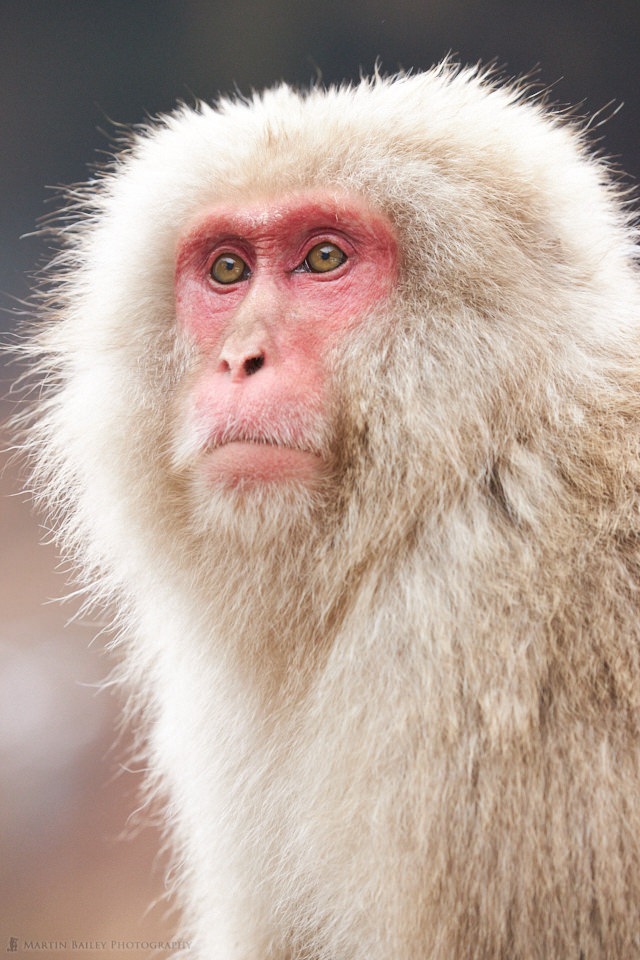
Monkeys
Our first day with the Snow Monkeys on this trip was very similar to the first trip because there was again no snow. Even without the snow though, these guys weren’t just monkeys.
The opportunities that open up to us are different, but depending on how you approach it, definitely still worth being there, as with this first image, where I once again used the warm-colored background with the darker top, as well as the less diffused light to create a beautiful rim-light with the monkey’s fur.
This is a comparatively light-colored monkey anyway, which helps, but with well-controlled exposure, the results can be really nice. The only challenge was getting a monkey in a position where the background was far enough away to be completely blurred, and with enough contrast to form the rim-light.
I often find that even when exposing to the right, so that the histogram information is just touching the right shoulder, the monkey’s faces can still be slightly dark, so I generally tweak the Shadows sliders in Capture One Pro to bring that back out, and that’s the same if you’re using Lightroom.
That didn’t work as usual in this case though because I wanted to keep the top of the background dark, so rather than just increasing the Shadows slider for the entire image, I painted in an Adjustment Mask just around the monkey’s face, and increased the Shadows on the mask instead.
That enabled me to brighten the face without increasing the darkness of the background and losing some of that contrast that I was enjoying working with.
Another thing that I always enjoy doing, is walking down into the valley next to the river, to see what is happening there, away from the hot spring pool that is so popular.
On our first day, we were treated to a pair of young monkeys grooming (below, left), and I just love the pensive look on the larger monkey’s face here, but more so, the completely relaxed, almost meditative mood of the monkey being groomed. I also really like the background in this shot too. Once again, it was far enough away to be nice and blurred, but the pale brown tones make a nice change from the white, as much as I do love it when these guys are against the snow.
Talking of snow, although it wasn’t as much as forecast, it actually did snow overnight after our first day, and we were rewarded with some snow-covered patches as well as a bit of falling snow on our main, full day with the monkeys, as you can see in the next image (below, right).
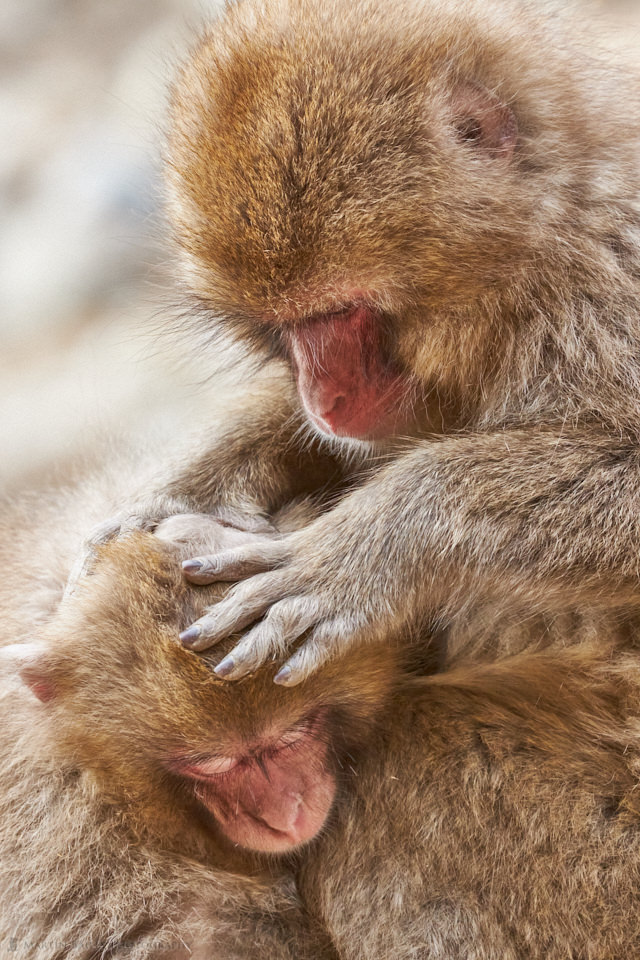
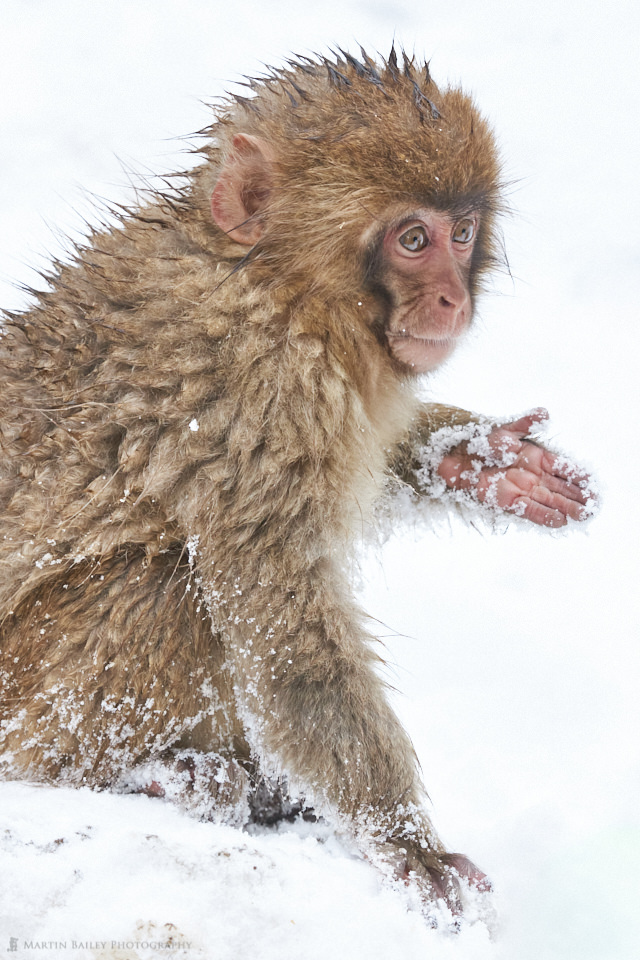
The snow is a little dirty, and I have to admit, I cloned out two tiny triangular gaps in the snow where rock showed through, but it was nice to be able to get an almost completely white background, for the first time this season. It had snowed during the two and a half weeks between our two visits, so it wasn’t a completely snow-less year, but this was the first snow that I’d had, so it was nice to see.
You can see from this next image though, that the valley walls were still very much bare, with just a few patches of snow here and there. It takes a lot more snow than we’d had, and really multiple snowfalls, to cover the valley walls. A scuffle in the pool resulted in this mother and baby getting out, so as this young one clung to its mother for warmth, she surveyed the area and situation, trying to figure out what to do next.
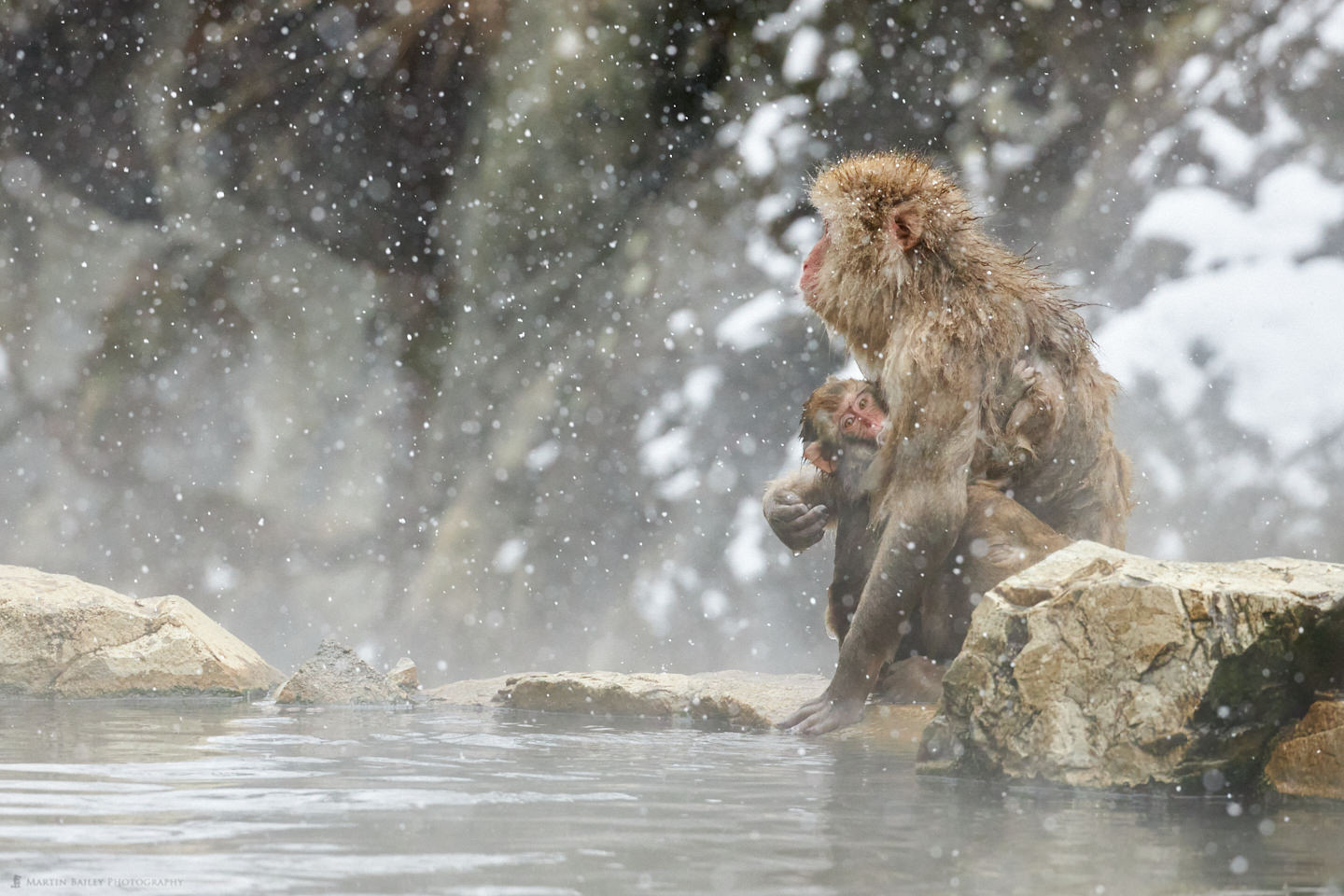

As much as I enjoy intimately close images of my subjects, I do really enjoy placing them in their environment like this as well, giving the viewers of our images more context, although, as with most photographs, it’s always about how much the photographer wants you to see.
Most people don’t realize just how crowded this location can get, because most of the photographs you see are just of the animals. You’d be forgiven for thinking that this monkey is somewhat isolated in the mountains when the reality is that to the left of this scene, there are probably between 50 and a hundred people standing around with some form of an imaging device and a huge smile on their faces.
That is fine, of course. I have a huge smile on my face as well most of the time while I’m at the snow monkeys. The point is that we show what we want to show, and it can sometimes be deceiving, like the pose in this shot.
Everyone that sees this, including me when it happened, and when people look at the photo, recall the end of the Rocky movie, generally accompanied by a corny impression of Stallone calling out to Adrian.
Once again these primates prove to be some of our closest cousins, and for once, this wasn’t a fleeting moment. This monkey held her arms up for perhaps 20 seconds, then moved around to face the other side, giving us plenty of opportunities to record her proud pose.
Red-Crowned Cranes
Happy that we’d gotten some snow and some nice monkey photos, we headed back to Tokyo, and thankfully our flight was not delayed this time, so we made our way up to Hokkaido on schedule on the fourth morning of the tour, and made our way straight for the Red-Crowned Cranes, which continued to provide us with abundant photography opportunities.
The light was a little bit harsh at times though, so for this first photo, I actually drew a mask over the foreground and reduced the clarity, to try and take a little bit of the edge off the crunchy looking snow. It was nice to see the crane’s dancing together and many times on this trip they were kind enough to do it without other cranes getting in the way.
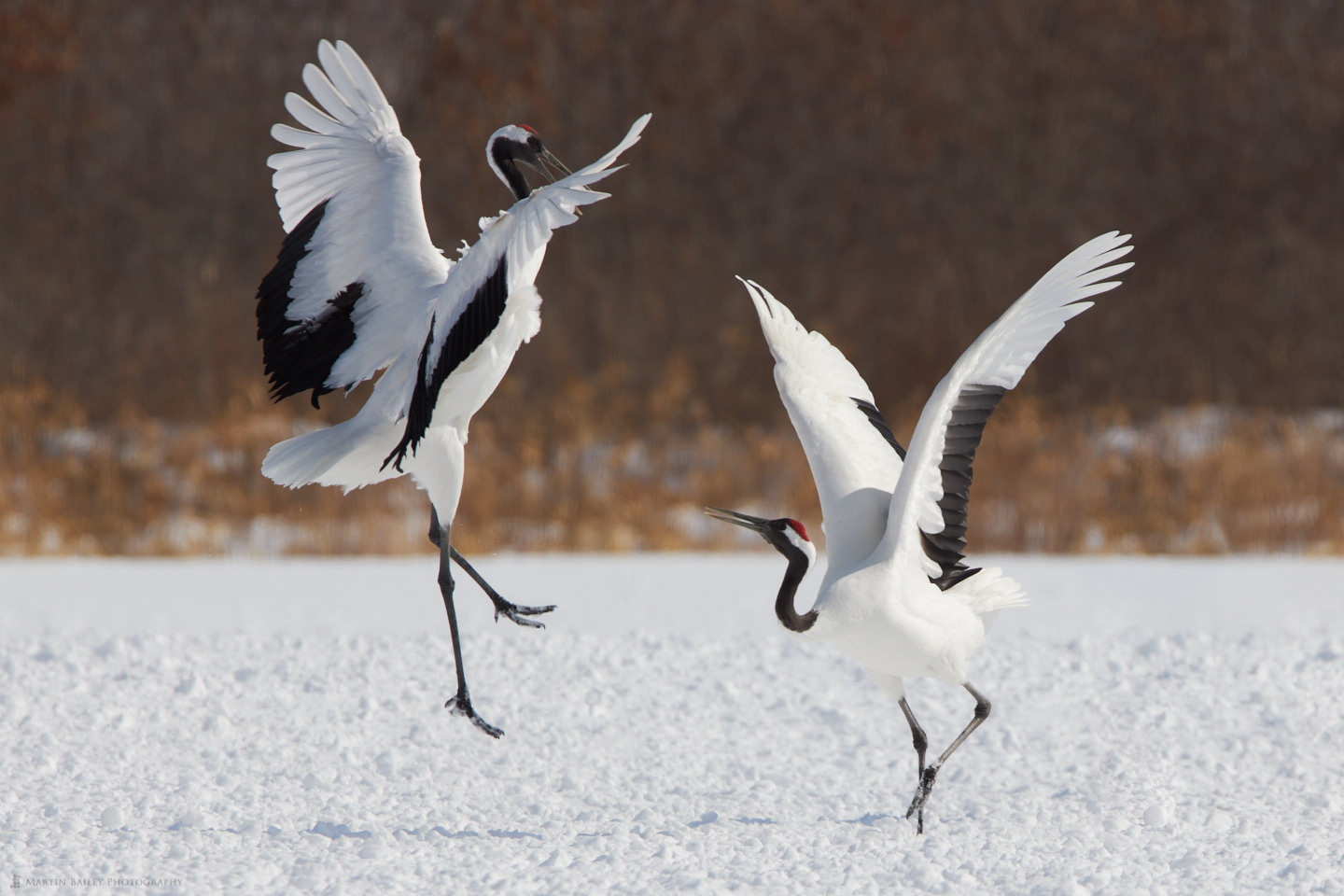
I put this post together in a bit of a jumbled order, as I selected my images, and came back to this point after writing the rest of the post, as I now know that I have way too many crane shots to share by the end of this episode. I still have 18 other images in addition to the rest of the shots that we will look at today, so I’m giving up trying to keep this series to just two episodes unless I can do a really good job of holding myself back on the swans and sea eagles later. I’ll cheat with the next shot too, sharing three images in one.
Crane Triptych
It can be a lot of fun to just make portraits of the cranes that get close enough to fill the frame with just parts of their bodies. The obvious shots are the head and the graceful poses that the cranes make as they go about their tasks, such as grooming and eating. I was trying to decide which one of these images to share and couldn’t, so I decided to just go with all three as a triptych. I anguished for a while over the order in which to place the images, but decided to just go with chronological order from left to right, as there flow became too choreographed each time I tried something that should have made more sense.
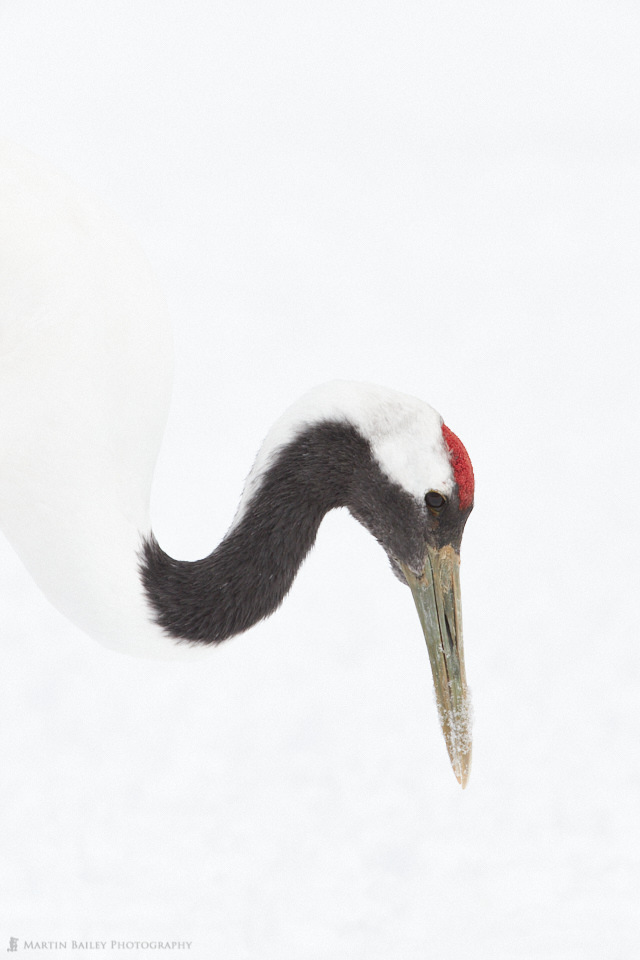
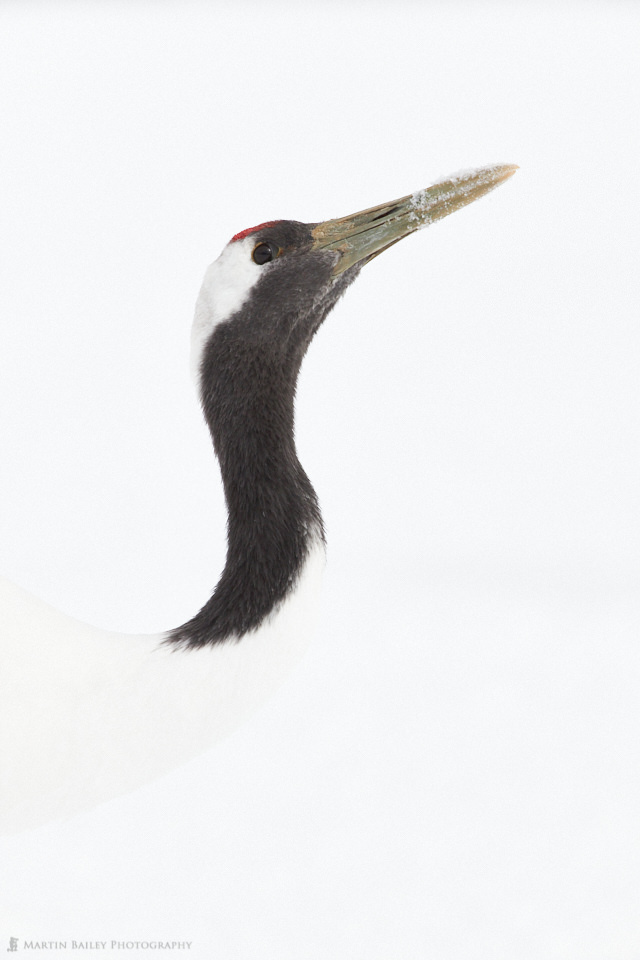
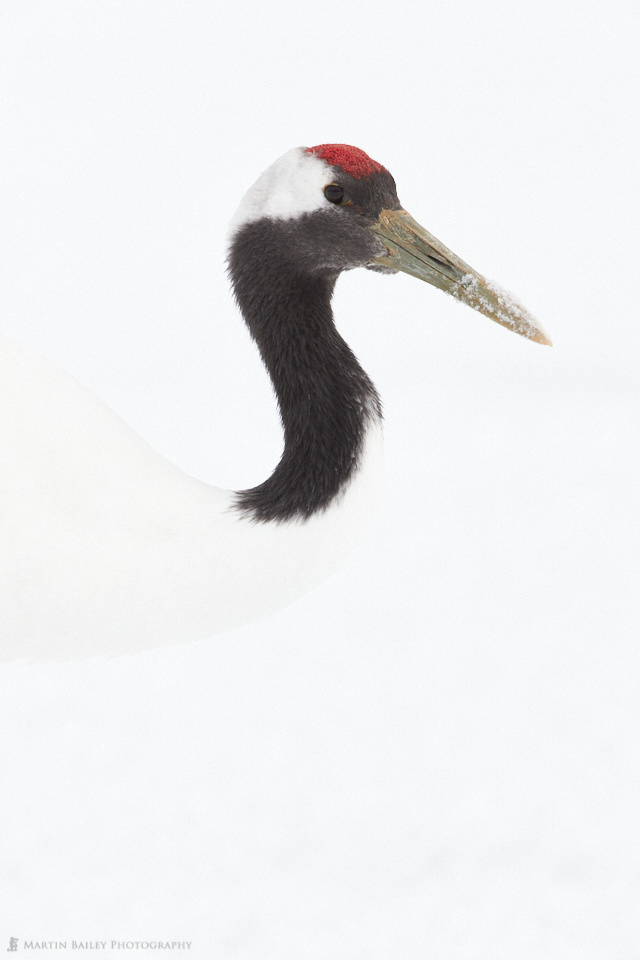
These photos were all shot at 560 mm with my Canon 200-400 mm lens with the 1.4X Extender. I actually found myself using a second extender for a focal length range of 280 – 560 mm with the internal Extender disengaged but then having the option to flip it back in for a focal length range of 392 – 784 mm. The image quality drops very slightly for some images, but the autofocus is still very snappy, although slightly more error-prone than when just using the internal Extender.
Here’s another shot made at 784 mm, with both the internal and external 1.4X Extenders engaged. I’m sure you’ll agree that the image quality is there, making this a viable way of shooting. I just really enjoy getting in close like this for some of my shots, especially with subjects as beautiful as these red-crowned cranes.
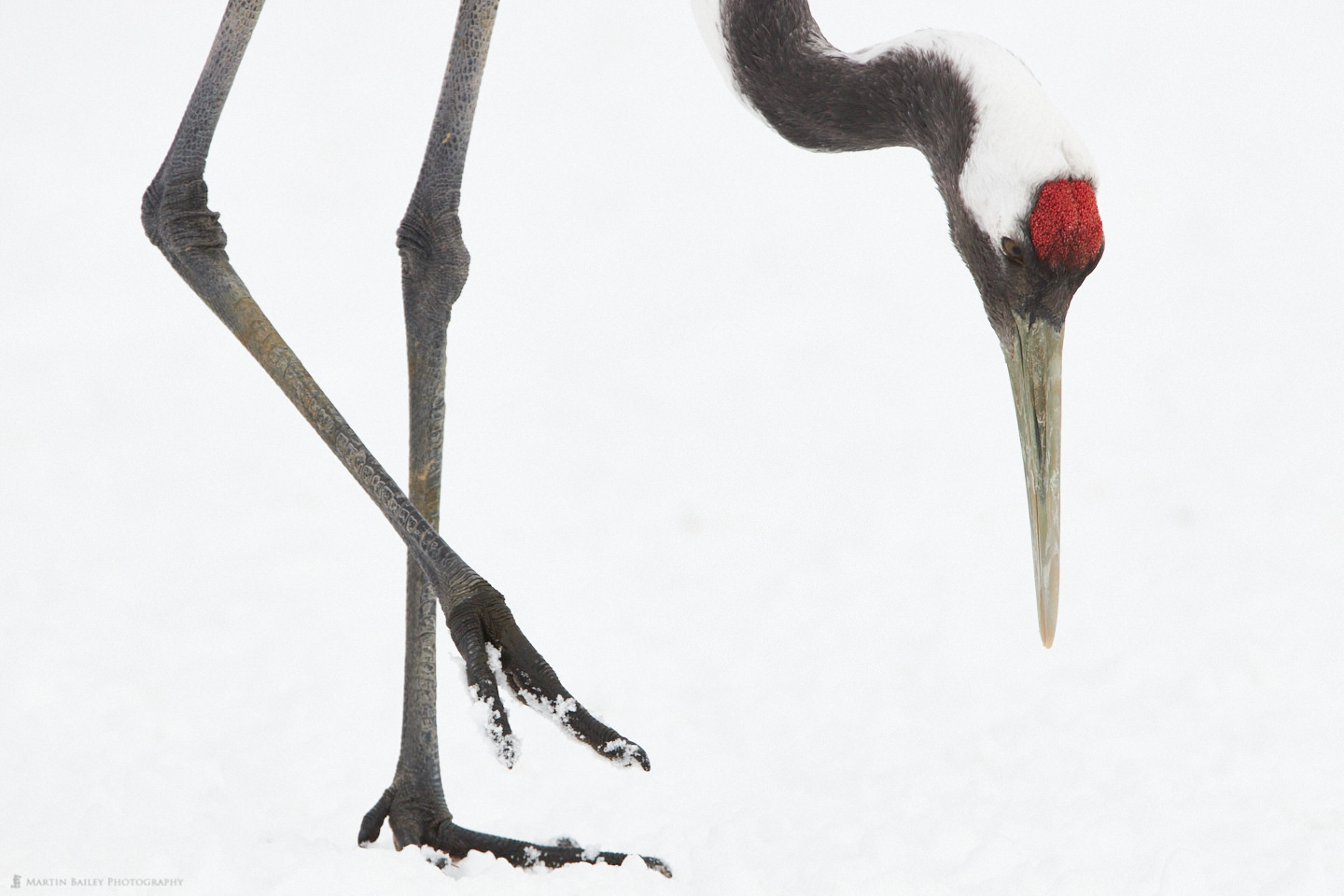
On the second day in Hokkaido, we visited the bridge in the town of Tsurui where the Red-Crowned Cranes sleep in the river, in what is supposed to be their safe haven. It would be if it wasn’t for the atrocious behavior of a select few visitors from neighboring countries. A few years ago, some Korean men dressed as government workers and went down under the bridge to get a photograph of the birds from a different angle, although the moment they did, the birds flew away and many didn’t return for a number of weeks.
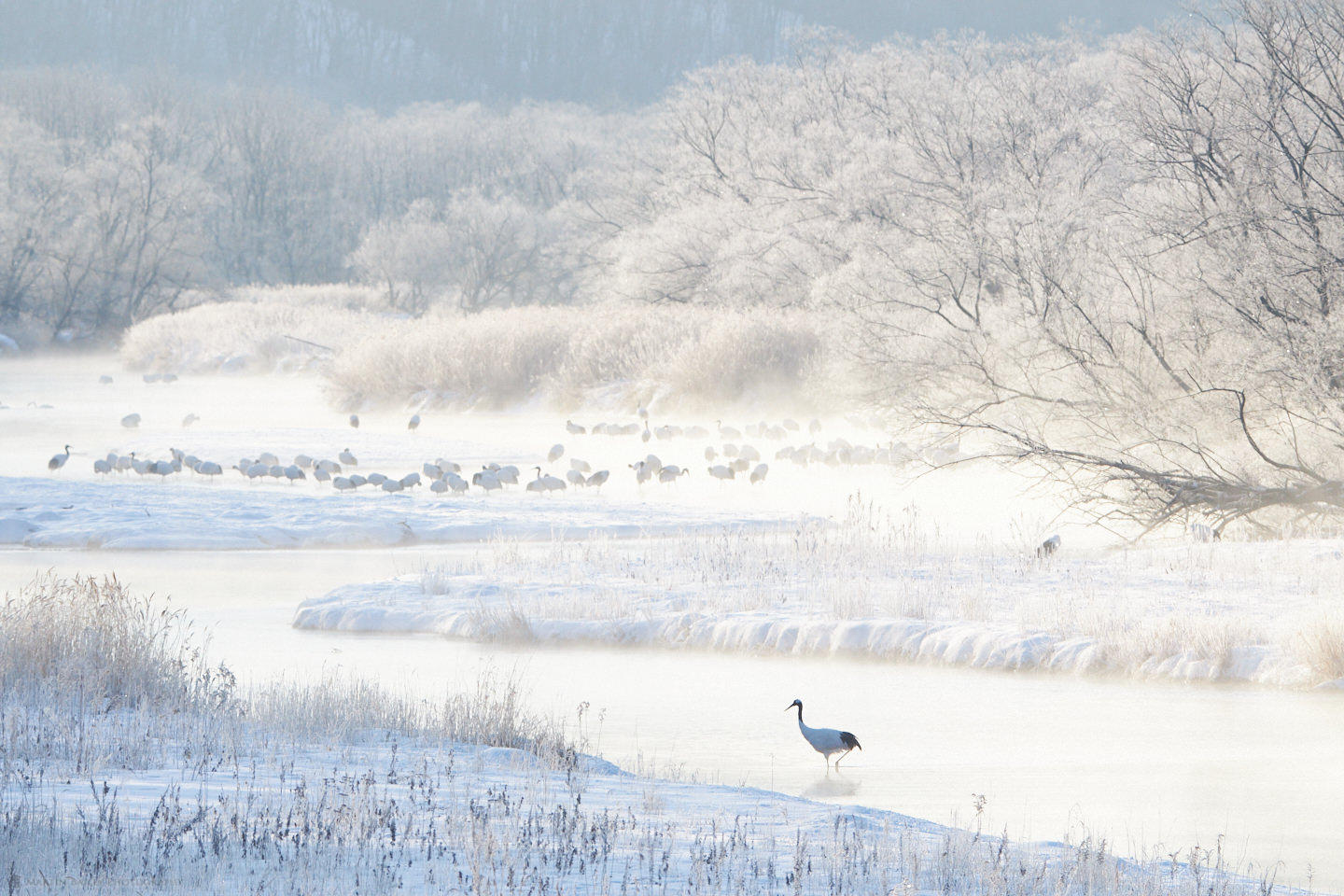
This year, a Chinese man hired a taxi from Kushiro city to take him to the car park, where he set down his drone and proceeded to fly it down the river, once again startling the cranes, forcing them further back than ever. The cranes all used to roost where this foreground crane is now, and when they ventured closer to the bridge, they were only around 20 or 30 meters away, sometimes closer. These days though, after repeated abuses, they rarely come even this far forward.
I love this photo, but it completely saddens me to think that these locations are being completely ruined by the actions of just a few irresponsible people looking for a few seconds of video or something “different”. Before long the cranes will roost completely around that distant bend in the river, and there will be nothing but trees and water and a bridge full of disappointed photographers.
I don’t like to call out people by their nationality, as it really is just a select few, but it seems that people from our neighboring countries are the main perpetrators in these irresponsible acts, and I for one, would love it if someone was able to educate them a little more on how to behave around wild animals. If you think highly enough of something to want to photograph it, surely it isn’t too much of a stretch of the imagination to want to keep it safe and protected.
Or maybe the drive for being here in the first place is more about just needing a shot that your photography buddies have, and is completely unrelated to any kind of admiration for the subjects. And to be fair, I am probably thinking this way purely because we are neighbors, as I’m sure there are photographers in other countries that sometimes go too far to get the shot. To me, there are no photographs that are worth disturbing the animals to the degree that some people tend to be OK with.
Ural Owl Pair
We’d visited the Ural Owl’s nest that I know of in the area the previous day, and being late in the season, and warmer than usual, there were no owls there. After breakfast on the second day though, we went back, and the pair were sitting in their tree, looking as cute as ever. Being nocturnal, they sleep mostly during the day, but the larger female owl opened her eyes for a few moments to look down as something, before closing them again for the rest of our visit.

For this shot, I’d used both the internal 1.4X Extender and an external 2.0X Extender, for a focal length of 1120mm. That is really pushing it, but most of the time the images are still pretty sharp, as long as you have a fast enough shutter speed and accurate focusing.
Japan Winter Wildlife Tours 2022
As my 2021 Japan Winter Wildlife Tour is already sold-out, if you’d like to join me on this tour, please take a look at the 2022 tour page, or check my tours page for a link to everything that is currently available.
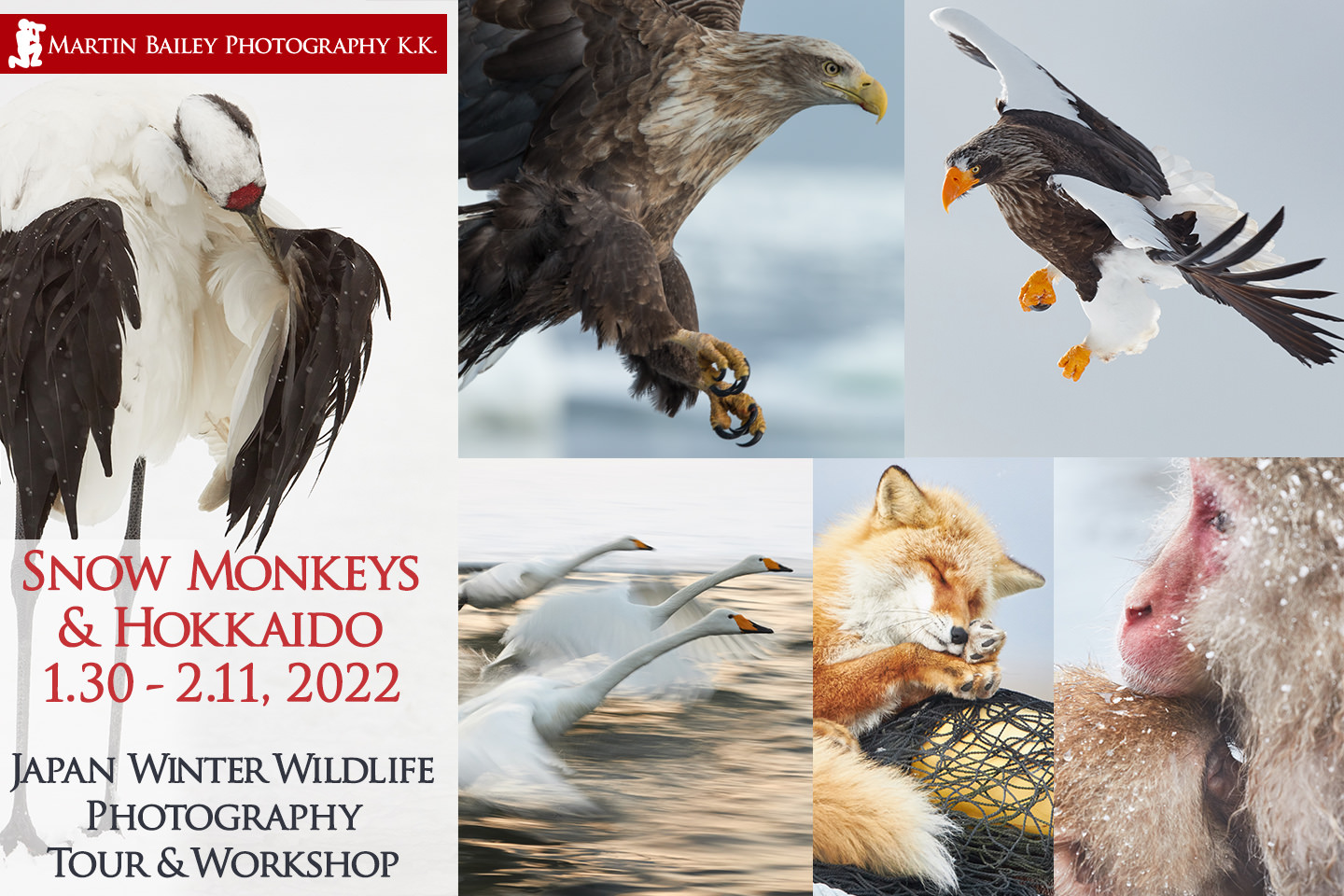
Show Notes
Check out my available tours here: https://mbp.ac/tours
Audio
Subscribe in iTunes to get Podcasts delivered automatically to your computer.
Download this Podcast as an MP3 with Chapters.
Visit this page for help on how to view the images in MP3 files.


Absolutely gorgeous!
Thanks, Monica!
Martin, The triptych is outstanding. I love the composition and the order presentation.
Thanks, Ulana! That is reassuring.
Great photos Martin.
Drones are awful. I honestly think they should be banned.